Smart Home Security on a Budget: DIY Tips and Tricks
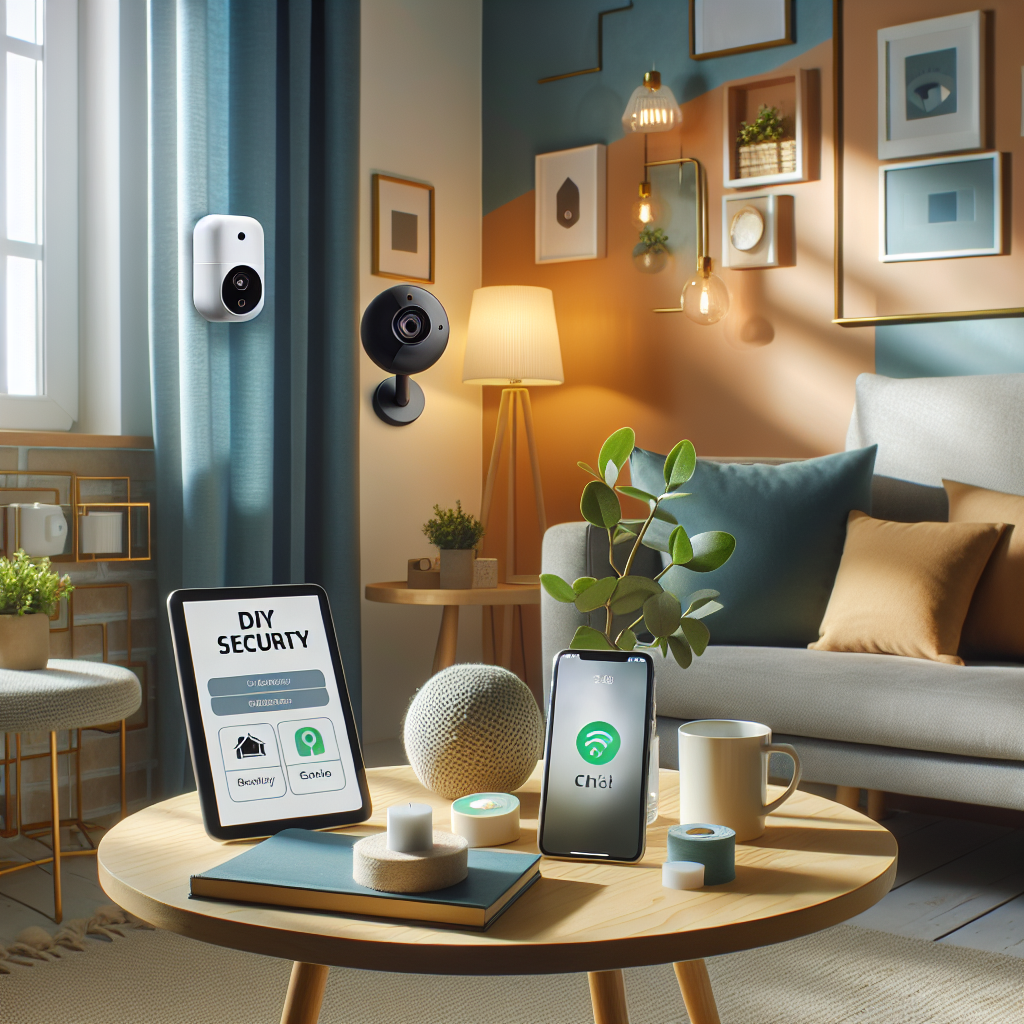
Are you searching for affordable ways to secure your home without emptying your wallet? You’re in luck! Whether you own your place or are renting, several budget-friendly options can enhance your home’s security. Begin with basic steps, like ensuring all doors and windows are locked. For added protection, consider installing window bars. Well-placed, solar-powered lights around entry points can also deter potential intruders.
When it comes to advanced measures, DIY security systems offer cost-effective solutions. Smart cameras from brands like Wyze and Blink are easy to install and connect to your phone. Door and window sensors alert you when openings occur, while smart doorbells from companies like Ring let you see visitors without opening the door. Motion sensors add another layer by detecting movement and sending alerts to your phone.
Harness the power of technology with a smart home hub like Amazon Echo or Google Home. These hubs centralize your devices, making home management straightforward. Remember to secure your home network by changing default router passwords and enabling encryption. A guest network for visitors can keep your smart devices safe from unauthorized access.
Customize your security setup based on your specific needs—perhaps a camera at the front door and window sensors at the back. Modern security systems offer a high degree of flexibility at low costs. Looking Glass Structures can also assist in integrating these systems during home remodels or constructions.
Smart home security doesn’t have to be expensive. Start with the basics and build as needed. For more insights and assistance, feel free to reach out to Looking Glass Structures. Read the full article for a comprehensive guide on setting up smart home security on a budget!
The Pros and Cons of Professional vs. DIY Smart Home Security

As homeowners, securing your home is paramount, and modern technology offers a plethora of smart security options. Deciding between professional installation and DIY setups can be challenging. Professional smart home security, provided by companies like ADT or Vivint, offers expert installation, 24/7 monitoring, and a suite of integrated features. However, these services can be costly, lack customization, and often involve long-term contracts.
On the other hand, DIY smart home security systems, offered by brands like Ring and SimpliSafe, are praised for their lower costs, customizable options, and no-contract flexibility. Yet, they come with the responsibility of self-installation, self-monitoring, and limited support if issues arise.
Ultimately, the choice between professional and DIY systems hinges on your budget, technical skills, and preference for either peace of mind with professional oversight or the satisfaction and savings of a DIY approach. At Looking Glass Structures, we champion comprehensive solutions to make your home both stylish and secure, whether through professional setups or DIY projects. For those needing additional support, our On-Demand Handyman service is always available to assist.
To dive deeper into the pros and cons to help make your decision, read the full article.
5 Best Smart Home Security Systems for Large Houses
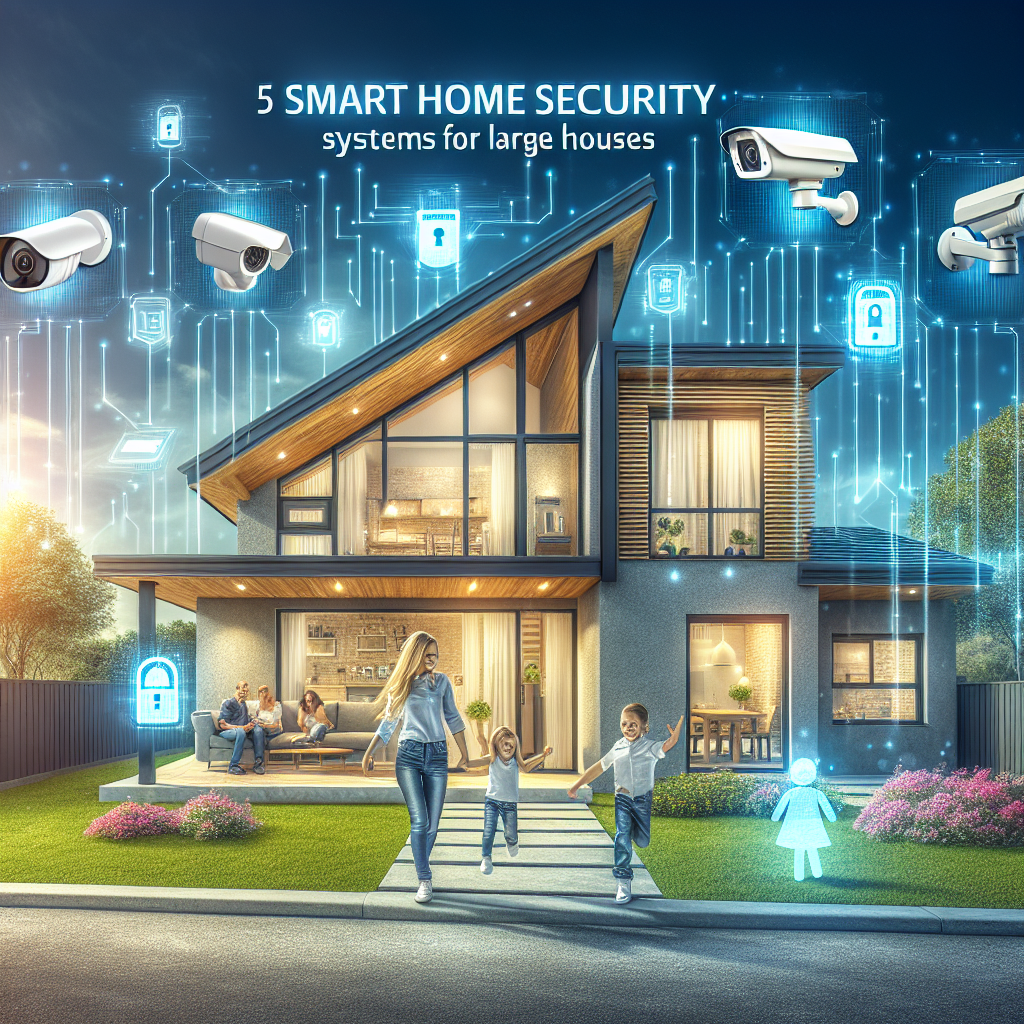
Smart security for large homes has become an essential necessity for homeowners. These systems provide peace of mind by monitoring the property, even when away or in another part of the house. They are also scalable and can integrate seamlessly with other home automation devices, making it easy to control various aspects of your home security through simple commands or a smartphone.
For larger homes specifically, Vivint Smart Home Security presents a comprehensive solution with 24/7 professional monitoring, smart home integration, and high-quality equipment. It is a bit pricey and requires professional installation but offers customizable packages and responsive customer service. ADT Home Security is a longstanding name in the industry, known for its high-tech equipment, mobile app control, and professional installation, though it comes with lengthy contracts and higher fees.
Ring Alarm Security System offers a flexible, DIY approach with affordable monitoring and smart integration, making it suitable for large homes, although it may struggle with Wi-Fi range limitations. SimpliSafe Home Security stands out for its no-contracts policy and ease of installation, but it has limited home automation features and mixed reviews on customer support. Lastly, Abode Security offers a versatile solution with comprehensive DIY home security, advanced home automation, and optional professional monitoring, though it can be pricey upfront.
Securing a large home doesn’t have to be complicated or expensive. Upgrade to a smart security system that fits your home’s requirements to enjoy peace of mind, convenience, and scalability. For a deeper dive into each system’s features and benefits, read the full article.
How to Install a Wireless Security Camera System
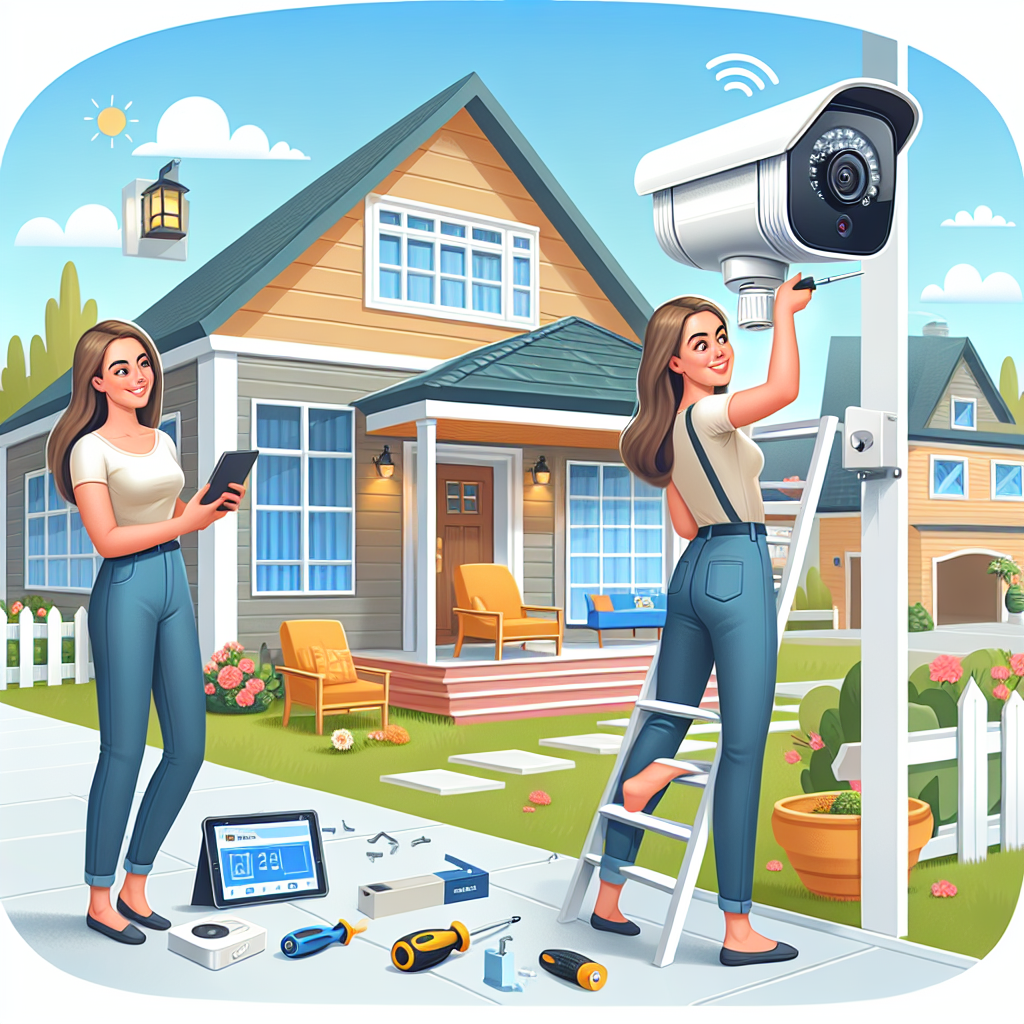
Feeling secure at home is something we all desire, and a wireless security camera system can provide that added peace of mind. This guide will walk you through the straightforward process of installing one. Wireless security cameras offer numerous advantages including easy installation, flexibility in placement, and remote access through smartphone apps.
Before beginning, gather the necessary tools: a drill, screwdriver, step ladder, wireless security camera kit, and power drill. Start by planning the placement of your cameras, focusing on key entry points such as doors, windows, the driveway, and the backyard. Ensure the chosen spots are within Wi-Fi range.
Next, install the mount by drilling holes and securely attaching the bracket; use wall anchors for drywall. Attach the camera to the mount and adjust the angle using the live feed on the camera app. Most cameras are plug-and-play, so connect to a power outlet or insert fully-charged batteries if applicable. Follow the camera’s manual to connect it to your Wi-Fi network and configure it using the recommended app.
After setup, test your cameras to ensure they capture the desired areas, verify motion detection by walking through the detection zones, and check the night vision capability. Perform occasional maintenance by cleaning the lenses and checking for software updates or battery levels.
If DIY installation feels overwhelming, professional services like Looking Glass Structures can assist with expert installation and maintenance, providing a hassle-free experience.
For those interested in securing their homes by themselves, or potentially seeking professional assistance, read the full article for detailed steps and additional tips.
Best Smart Security Cameras for Indoor Use
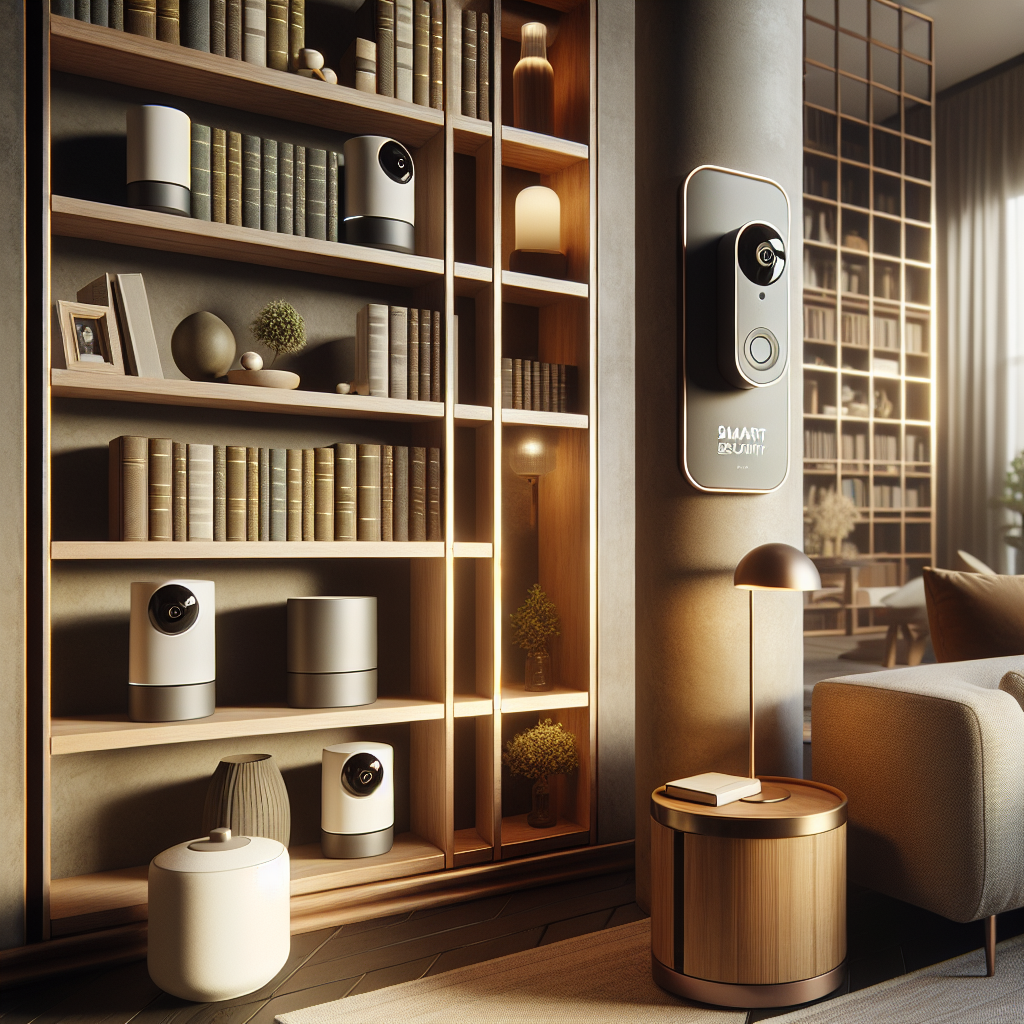
At Looking Glass Structures, we understand the importance of safeguarding your home, which is why we’re delving into the best indoor smart security cameras on the market. These modern devices offer easy installation, advanced features like motion detection and night vision, and the ability to monitor your home remotely via smartphone, offering peace of mind in our busy lives.
**Top Picks:**
1. **Arlo Q**: Features 1080p HD video, two-way audio, customizable alerts, and free 7-day cloud storage.
2. **Nest Cam IQ Indoor**: Known for its 4K sensor, Supersight zoom, and built-in Google Assistant, promising high-resolution clarity and seamless smart home integration.
3. **Wyze Cam Pan**: Budget-friendly with 360-degree coverage, motion tracking, and 14-day free cloud storage, offering premium features without breaking the bank.
**Integrate into Home Renovations:**
Here at Looking Glass Structures, combining home security with renovation projects is our forte. Concealing wires, optimizing camera placement, and enhancing aesthetics during remodeling can seamlessly incorporate these gadgets into your home, ensuring security without compromising on design.
**Final Thoughts:**
Indoor smart security cameras such as the **Arlo Q**, **Nest Cam IQ Indoor**, and **Wyze Cam Pan** provide diverse features to suit various needs and budgets. As you renovate or build anew, consider integrating these smart security options to keep your home safe and stylish. Interested in protecting your investment? Let us assist you in making your home the best it can be.
Stay safe, and happy renovating!
Curious to learn more about the best indoor smart security cameras? Read the full article to dive deeper.
How to Choose the Right Smart Security Sensors for Your Home

Smart security sensors are revolutionizing home security by providing an additional layer of protection and peace of mind. These sensors can detect unauthorized access, motion, smoke, and other threats, sending alerts directly to your phone or security system. Understanding the different types of smart security sensors and their features is crucial for making an informed decision.
There are several types of smart security sensors to choose from, each with its own advantages and disadvantages. Motion sensors, ideal for covering large areas like living rooms and backyards, can alert you to intruders but may trigger false alarms due to pets. Door and window sensors are perfect for securing entry points and are easy to install, though their effectiveness is limited to accessible entry points. Glass break sensors provide additional protection for homes with large windows or sliding doors but may require professional installation.
Key features to consider when selecting smart security sensors include compatibility with your existing smart home system, battery life, mobile alerts, and ease of installation. Ensuring that your sensors are compatible and easy to integrate will enhance their effectiveness.
Placement is also crucial for optimal coverage. Door and window sensors should be placed on entry points, motion sensors in common areas like living rooms and hallways, and glass break sensors near large windows or glass doors. Integrating these sensors during home remodeling or new construction can further enhance your security system, ensuring they are both functional and aesthetically pleasing.
Regular maintenance and timely upgrades are essential to keep your security system effective. Performing routine checks and staying updated with new sensor models and software enhancements can offer improved features and better protection.
For more detailed insights on choosing the right smart security sensors and integrating them into your home, read the full article.
Smart Locks vs. Traditional Locks: Which is More Secure?
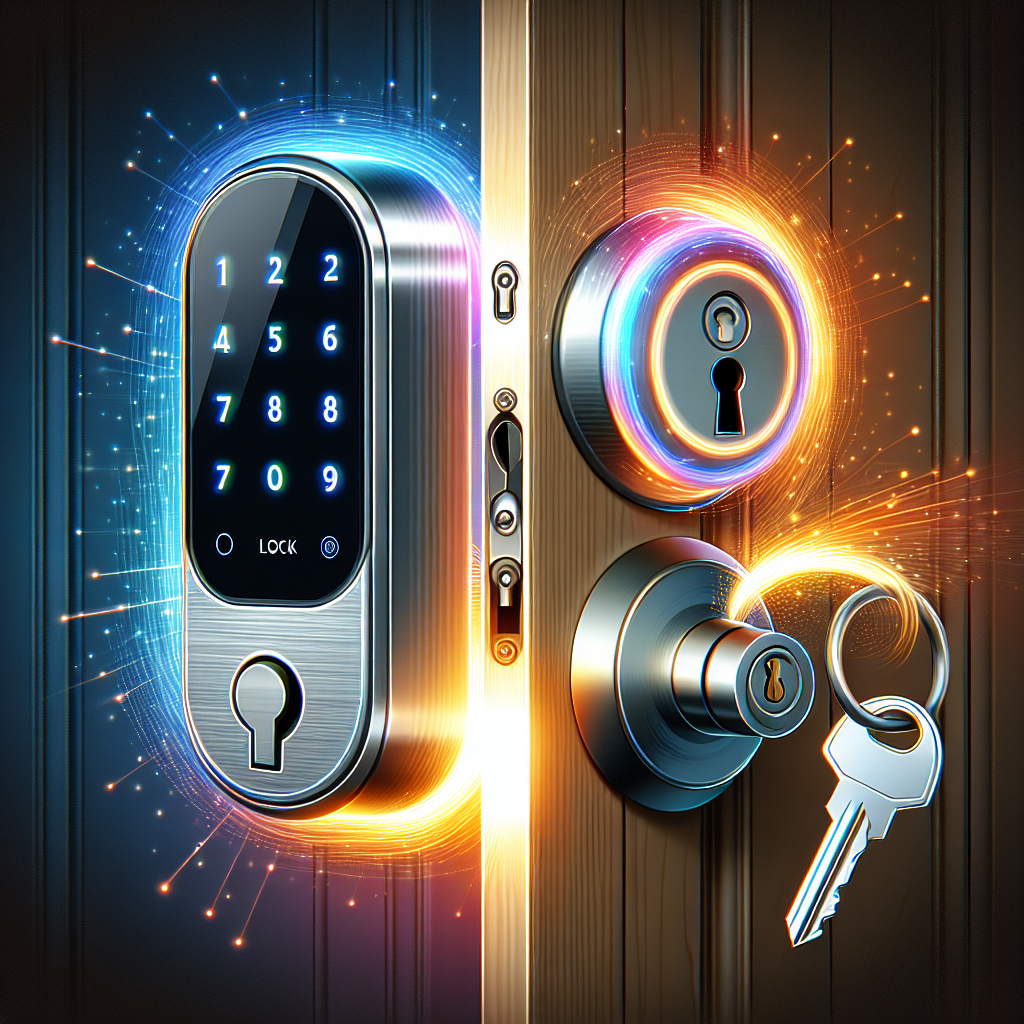
As homeowners, the dilemma of choosing between traditional locks and smart locks for home security is common. Traditional locks, like deadbolts, have been trusted for years due to their simplicity and reliability. However, they are not without flaws, as they can be picked, and keys can be lost.
On the other hand, smart locks represent a technological leap similar to the evolution from phones to smartphones. These locks offer features such as remote locking and unlocking, app control, and integration with other smart home devices—enhancing convenience significantly. Yet, they come with concerns about security vulnerabilities, reliance on electricity, and potential for hacking.
Traditional locks are easy to use and don’t depend on electricity or internet connections. But they lack the convenience and modern features of smart locks, which, although susceptible to digital threats and power issues, bring a level of innovation and convenience that traditional locks can’t match.
Ultimately, the choice hinges on individual needs and lifestyles. Tech-savvy individuals may find smart locks appealing, while those who prioritize simplicity may prefer traditional locks. A blended approach could also be a viable solution, offering both reliability and modern convenience.
For homeowners seeking guidance, Looking Glass Structures provides expert advice on home security, whether for new installations or repairs. To ensure your home is the safest it can be, considering your unique circumstances and needs is crucial.
Curious to learn more about the best lock for your home? Read the full article to dive deeper into the smart locks vs. traditional locks debate.
10 Best Smart Doorbell Cameras for Home Protection
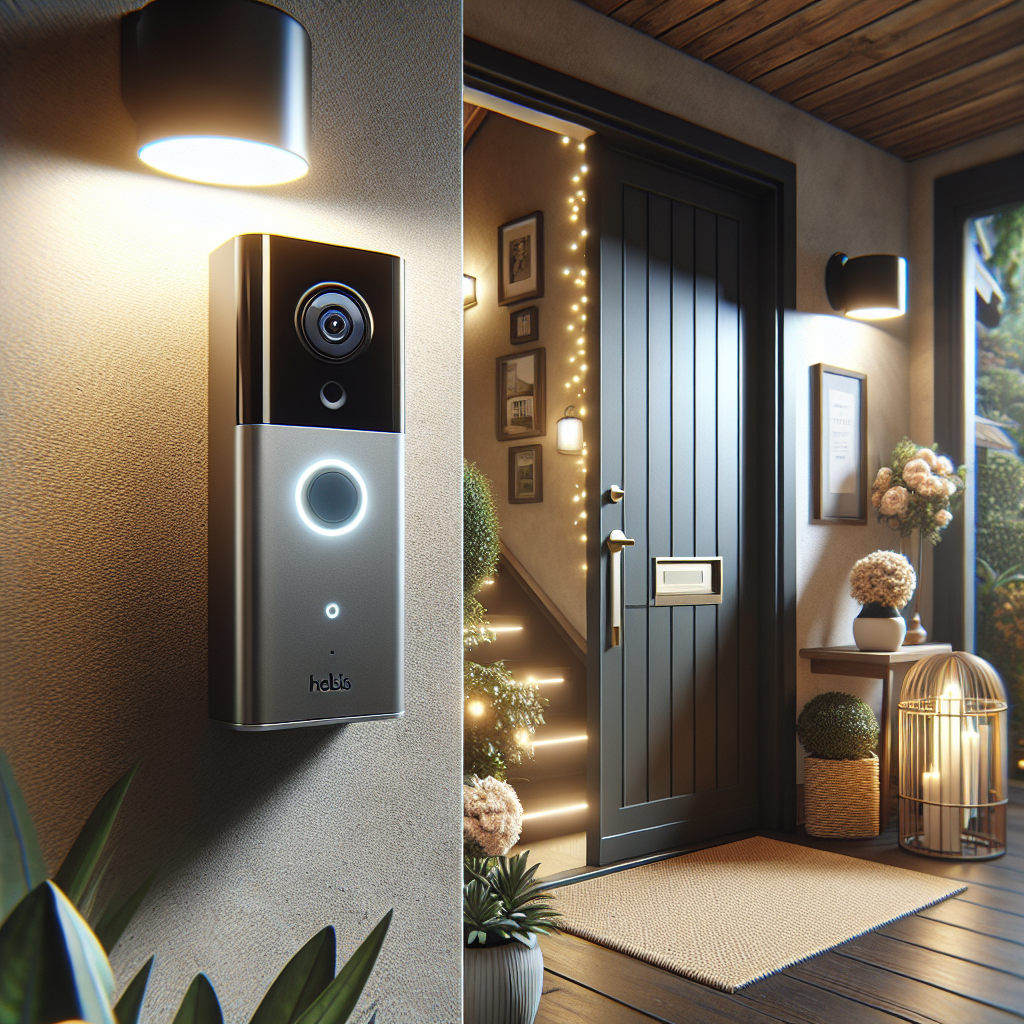
Homeowners constantly seek ways to enhance their home security, and smart doorbell cameras have emerged as a popular solution. These advanced gadgets allow you to see and communicate with visitors at your door, even when you’re not home. In this post, we explore the ten best smart doorbell cameras for home protection.
The **Ring Video Doorbell 4** stands out with its 1080p HD video, two-way talk, and advanced motion detection, seamlessly integrating with Amazon Alexa. Another top contender is the **Nest Hello Video Doorbell**, offering high-definition video and 24/7 streaming, a great fit for Google product users.
The **Arlo Video Doorbell** delivers a detailed image with a 180-degree view and package detection features, while **Eufy Security Video Doorbell** boasts clear video quality and local storage, eliminating subscription fees. For simplicity, the **Simplisafe Video Doorbell** is user-friendly and integrates well with other Simplisafe security products.
The **Lorex Doorbell Camera** offers impressive video quality and night vision, storing footage on a 32GB microSD card, and the **Remo+ RemoBell S** is a budget-friendly option with free cloud storage and voice control compatibility. The sleek **August Doorbell Cam Pro** integrates with the August Smart Lock and provides video from before motion detection.
The **Zmodo Greet Pro** offers 1080p HD video and a pre-recorded voice message feature, while the **SkyBell HD** is known for its durability and weather resistance, recording HD video day and night.
Choosing the best smart doorbell camera depends on your specific needs and budget, but each of these options can significantly enhance your home security and provide peace of mind.
Read the full article to find out which smart doorbell camera suits your home best and for more details on improving your home security.
How to Secure Your Home with Smart Technology: A Beginner’s Guide
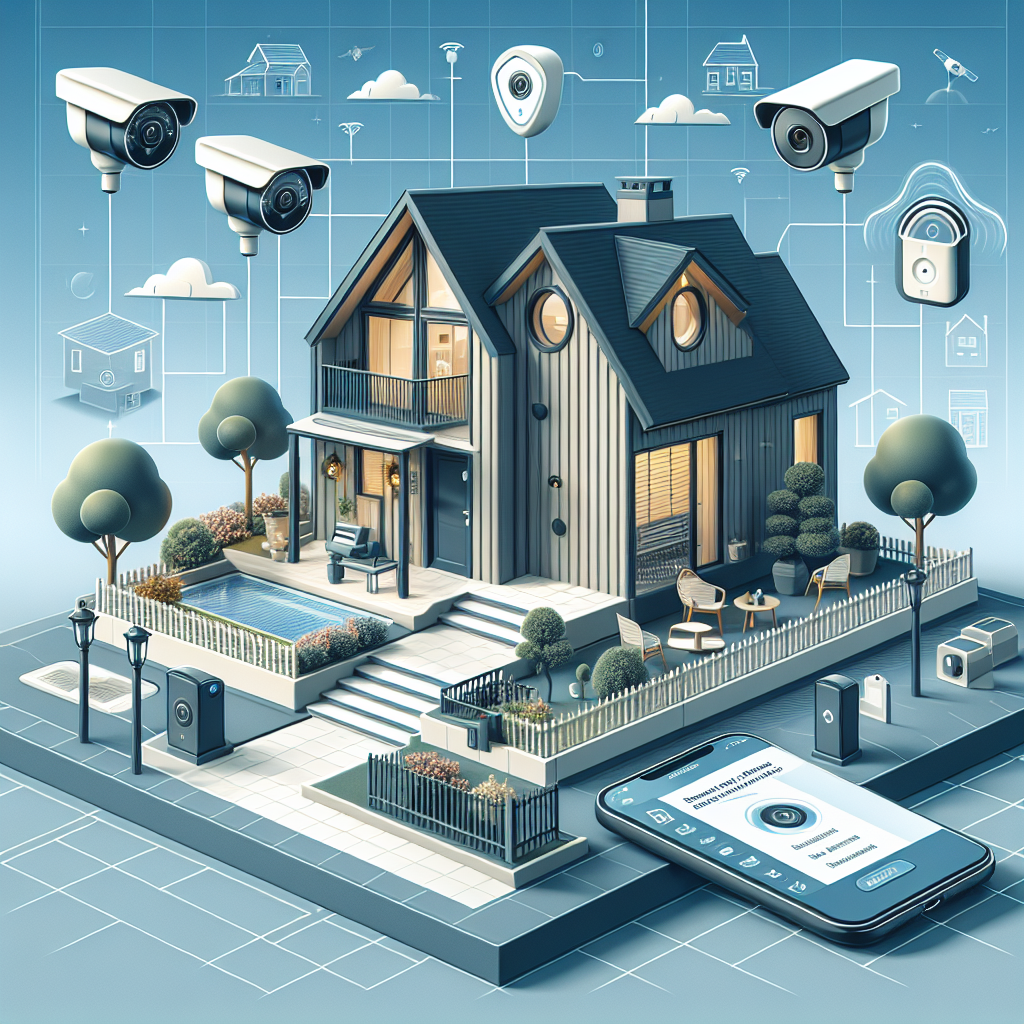
Securing your home with smart technology doesn’t have to be daunting. This beginner’s guide simplifies the process, outlining how connected gadgets like cameras, smart locks, and alarms can protect your home, whether you’re there or not. Smart home security is increasingly popular due to its ease of use, remote monitoring capabilities, and cost-effectiveness. You can control your entire system via user-friendly apps and voice commands, giving you full access and peace of mind from anywhere.
For those just starting, consider investing in essential components such as smart cameras, doorbells, locks, and alarms. Smart cameras offer features like motion detection and night vision, while smart doorbells allow you to see and talk to visitors remotely. Smart locks eliminate the need for traditional keys, and smart alarms provide immediate notifications if an intrusion occurs.
When selecting products, opt for reputable brands and don’t hesitate to seek professional advice. Installation is often DIY-friendly, but services like those provided by Looking Glass Structures can offer additional support and integration, especially beneficial during home renovations. They can help plan the optimal placement of devices to ensure comprehensive security.
Smart home security enhances your home’s safety and value. With the proper guidance and a bit of know-how, entering the world of smart technology becomes straightforward. Curious to learn more? Read the full article for an in-depth look at securing your home with smart technology.
The Ultimate Guide to Smart Home Security Systems
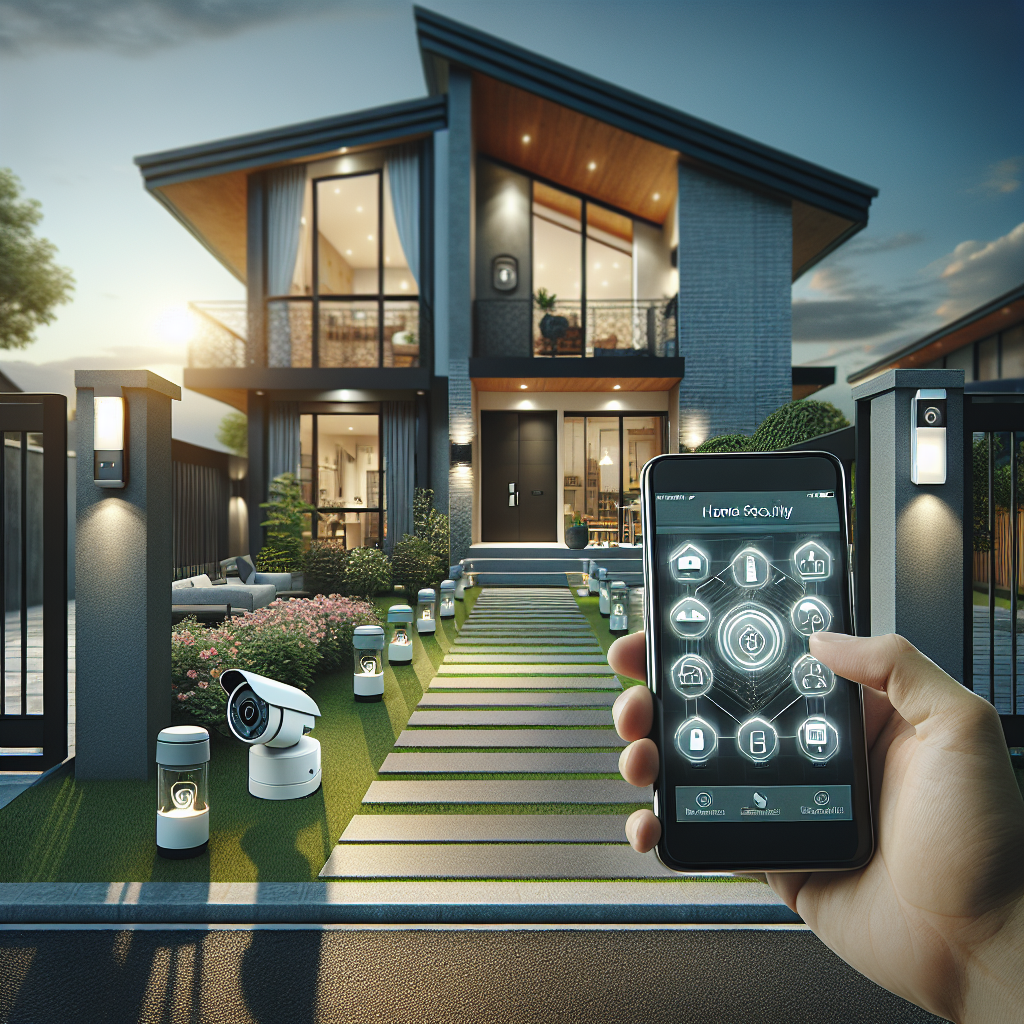
In today’s evolving technological landscape, ensuring home security has never been more accessible or efficient. Smart home security systems are transforming how we protect our homes, offering a range of features that go beyond traditional setups. These systems enable you to monitor and manage security from anywhere, using your smartphone, making them especially convenient for those who can’t always be on-site, like during a home remodel or new construction project.
There are several types of smart home security systems to consider. DIY systems are easy to install and perfect for those who prefer hands-on projects. Professional monitoring systems offer 24/7 surveillance, ideal for comprehensive protection. All-in-one systems provide a straightforward solution with everything you need in one package.
When choosing a system, key features to consider include high-definition cameras with night vision, smart locks that can be controlled remotely, and loud alarms that deter intruders. Advanced tech-savvy features like voice control, environmental sensors, and facial recognition add extra layers of security and convenience.
Deciding between DIY installation or professional setup depends on your comfort level with technology. DIY can be rewarding and cost-effective, while professional installation ensures everything is integrated perfectly, especially during a full home remodel.
Cost varies, with basic DIY systems ranging from $150 to $300, professional monitoring at $20 to $50 per month, and advanced all-in-one systems costing between $400 to $1,000. Long-term, a reliable system can add significant value to your home.
Ultimately, the right system for you will depend on your specific needs and lifestyle. Consulting with experts can help you make an informed decision and seamlessly integrate the system into your home’s design.
For a comprehensive exploration of smart home security systems and how they can enhance your home’s safety and value, read the full article.
